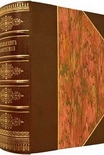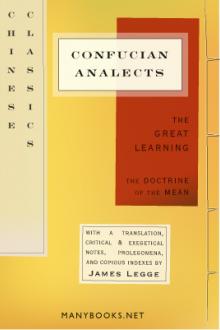Myths and Legends of China by E. Werner (free ebook reader for iphone TXT) 📗

- Author: E. Werner
Book online «Myths and Legends of China by E. Werner (free ebook reader for iphone TXT) 📗». Author E. Werner
The written language, too well known to need detailed description, a thing of beauty and a joy for ever to those able to appreciate it, said to have taken originally the form of knotted cords and then of notches on wood (though this was more probably the origin of numeration than of writing proper), took later that of rude outlines of natural objects, and then went on to the phonetic system, under which each character is composed of two parts, the radical, indicating the meaning, and the phonetic, indicating the sound. They were symbols, non-agglutinative and non-inflexional, and were written in vertical columns, probably from having in early times been painted or cut on strips of bark.
Achievements of the Chinese
As the result of all this fitful fever during so many centuries, we find that the Chinese, after having lived in nests “in order to avoid the animals,” and then in caves, have built themselves houses and palaces which are still made after the pattern of their prototype, with a flat wall behind, the openings in front, the walls put in after the pillars and roof-tree have been fixed, and out-buildings added on as side extensions. The k’ang, or ‘stove-bed’ (now a platform made of bricks), found all over the northern provinces, was a place scooped out of the side of the cave, with an opening underneath in which (as now) a fire was lit in winter. Windows and shutters opened upward, being a survival of the mat or shade Page 58hung in front of the apertures in the walls of the primitive cave-dwelling. Four of these buildings facing each other round a square made the courtyard, and one or more courtyards made the compound. They have fed themselves on almost everything edible to be found on, under, or above land or water, except milk, but live chiefly on rice, chicken, fish, vegetables, including garlic, and tea, though at one time they ate flesh and drank wine, sometimes to excess, before tea was cultivated. They have clothed themselves in skins and feathers, and then in silks and satins, but mostly in cotton, and hardly ever in wool. Under the Manchu régime the type of dress adopted was that of this horse-riding race, showing the chief characteristics of that noble animal, the broad sleeves representing the hoofs, the queue the mane, etc. This queue was formed of the hair growing from the back part of the scalp, the front of which was shaved. Unlike the Egyptians, they did not wear wigs. They have nearly always had the decency to wear their coats long, and have despised the Westerner for wearing his too short. They are now paradoxical enough to make the mistake of adopting the Westerner’s costume.
They have made to themselves great canals, bridges, aqueducts, and the longest wall there has ever been on the face of the earth (which could not be seen from the moon, as some sinologists have erroneously supposed, any more than a hair, however long, could be seen at a distance of a hundred yards). They have made long and wide roads, but failed to keep them in repair during the last few centuries, though much zeal, possibly due to commerce on oil- or electricity-driven wheels, is now being shown in this direction. They have built honorary portals to chaste widows, pagodas, and arched bridges of great Page 59beauty, not forgetting to surround each city with a high and substantial wall to keep out unfriendly people. They have made innumerable implements and weapons, from pens and fans and chopsticks to ploughs and carts and ships; from fiery darts, ‘flame elephants,’ bows and spears, spiked chariots, battering-rams, and hurling-engines to mangonels, trebuchets, matchlocks of wrought iron and plain bore with long barrels resting on a stock, and gingals fourteen feet long resting on a tripod, cuirasses of quilted cotton cloth covered with brass knobs, and helmets of iron or polished steel, sometimes inlaid, with neck- and ear-lappets. And they have been content not to improve upon these to any appreciable extent; but have lately shown a tendency to make the later patterns imported from the West in their own factories.
They have produced one of the greatest and most remarkable accumulations of literature the world has ever seen, and the finest porcelain; some music, not very fine; and some magnificent painting, though hardly any sculpture, and little architecture that will live. Page 60
Chapter II
On Chinese Mythology
Mythology and Intellectual Progress
The Manichæst, yin-yang (dualist), idea of existence, to which further reference will be made in the next chapter, finds its illustration in the dual life, real and imaginary, of all the peoples of the earth. They have both real histories and mythological histories. In the preceding chapter I have dealt briefly with the first—the life of reality—in China from the earliest times to the present day; the succeeding chapters are concerned with the second—the life of imagination. A survey of the first was necessary for a complete understanding of the second. The two react upon each other, affecting the national character and through it the history of the world.
Mythology is the science of the unscientific man’s explanation of what we call the Otherworld—itself and its denizens, their mysterious habits and surprising actions both there and here, usually including the creation of this world also. By the Otherworld he does not necessarily mean anything distant or even invisible, though the things he explains would mostly be included by us under those terms. In some countries myths are abundant, in others scarce. Why should this be? Why should some peoples tell many and marvellous tales about their gods and others say little about them, though





Comments (0)